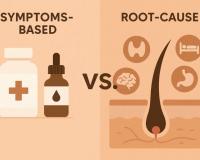Chewing Gum Emerges as a New Route for Microplastic Exposure in the Human Body

Leiden (Netherlands), March 29 – Microplastics have become an inescapable part of modern life, finding their way into our bloodstream, lungs, and liver. These tiny plastic particles enter the human body through various means—whether inhaled, ingested, or absorbed in other ways. A recent study has now identified another surprising source: chewing gum.
According to a report from The Conversation, these commonly consumed treats contain long-chain molecules known as polymers. While some gum brands use natural polymers derived from tree resin, others include synthetic polymers sourced from the petroleum industry. Both types are either similar to plastic or are, in fact, plastic. When chewed, these polymers can shed microscopic fragments.
In a study presented at the American Chemical Society meeting on March 25, a single volunteer chewed ten different brands of gum—five natural and five synthetic. Saliva samples were collected and examined under a microscope. Remarkably, microplastics were detected in both natural and synthetic chewing gums.
Researchers from the University of California, Los Angeles, estimated that a single piece of gum could release hundreds or even thousands of microplastic particles in the mouth, which could potentially be swallowed. These included plastics such as polystyrene, used in food containers; polyethylene, found in plastic grocery bags; and polypropylene, used in car bumpers and medicine bottles.
However, the health implications of these particles depend significantly on their size. The study found that the particles released during chewing measured around 20 micrometers in diameter—roughly the width of a human hair. From a cellular perspective, though, these are relatively large. For comparison, a red blood cell is about seven micrometers wide.
Smaller particles known as nanoplastics, typically 20 to 500 nanometers in size, are considered more concerning. These can enter living cells through a process called endocytosis and trigger harmful biological responses, such as the production of reactive oxygen species that weaken cells or cause oxidative stress.
The particles found in the chewing gum study, while notable, were much larger than the sizes linked to developmental abnormalities in animal embryos or cellular damage. Therefore, while the findings highlight a previously underestimated route of exposure, they do not confirm an immediate health risk.
This research illustrates how unknowingly, individuals may be exposing themselves to hundreds of microplastic particles even through routine actions like chewing gum. Nevertheless, experts advise caution in interpreting these findings. Some commentators argue that the health risks of microplastics may be overstated, while others critique the quality and methodology of existing scientific studies on the subject.
As research continues, a clearer understanding will eventually emerge about whether microplastics pose a real and measurable threat to human health or if concerns have been amplified beyond what the science currently supports.






